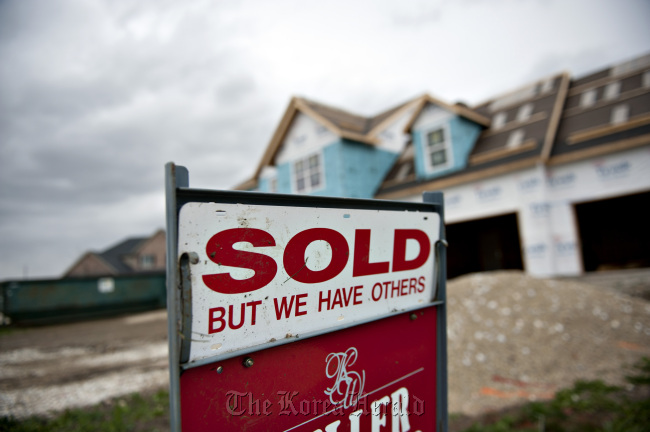 |
A “Sold” sign stands outside a new home in Peoria, Illinois. (Bloomberg) |
WASHINGTON (AP) ― A measure of U.S. home prices jumped 4.6 percent in August compared with a year ago, the largest year-over-year increase in more than six years.
CoreLogic, a private real estate data provider, also said Tuesday that prices rose 0.3 percent in August from July, the sixth straight monthly gain.
Steady price increases, combined with greater home sales and rising builder confidence, suggest the housing recovery may be sustainable.
Other measures of home prices have also increased. The Standard & Poor’s/Case Shiller index rose in July compared with a year ago, the second straight yearly increase after two years of declines. And an index compiled by a federal housing regulator has also reported annual increases.
Housing prices are rising in most areas, according to CoreLogic. Only 20 large cities out of 100 tracked showed declines in the 12 months ending in August. That compared with 26 in July. “The housing market’s gains are increasingly geographically diverse with only six states continuing to show declining prices,” said Mark Fleming, chief economist for CoreLogic.
States with the biggest price increases in the past 12 months were Arizona, Idaho, Nevada, Utah and Hawaii. Prices soared 18.2 percent in Arizona, partly because the supply of homes for sale is low and foreclosure sales have slowed. Prices have risen 10.4 percent in Idaho.
The states with the biggest declines were Rhode Island, Illinois, New Jersey, Alabama and Connecticut.
The housing market has begun to rebound this year more than five years after the bubble burst.
Sales of previously occupied homes jumped in August to the highest level since May 2010. The rate at which builders started single-family homes rose last month to the fastest in more than two years. Builders have also increased their spending on single-family home construction for five straight months. And the lowest mortgage rates on record have made home buying more attractive.
Even with the gains, the housing market has a long way back. Many would-be buyers can’t qualify for stricter lending standards or save enough money for larger down payments that most banks now require. Home sales, housing starts and prices all remain below healthy levels.
CoreLogic said its measure of prices is 26.7 percent below a nationwide peak in April 2006.
Still, the broader economy will likely benefit from rising home values. When prices rise, people typically feel wealthier and spend more. And more Americans are likely to put their houses up for sale, which could further energize the market.








